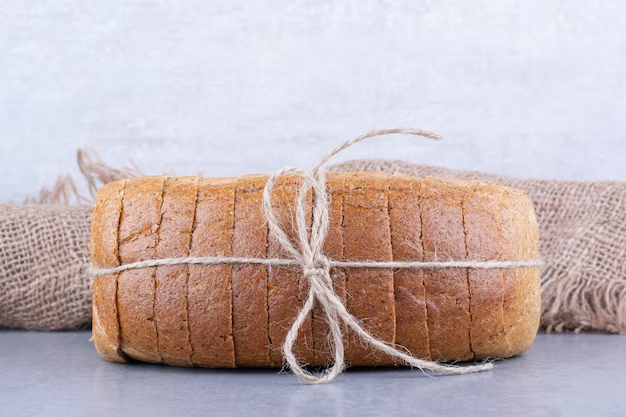How Long Can You Keep Bread in the Refrigerator? The Complete Guide to Bread Storage and Shelf Life
Bread is often considered a staple in many households, known for its versatility and comforting flavors. Yet, how many of us have experienced pulling out a crusty loaf only to find it's stale or worse, moldy? Storing bread properly can prevent such disappointments and extend its shelf life. But how does refrigeration impact the longevity of bread? Let's dive in and answer the crucial question: how long does bread last in the refrigerator?
🥖 Understanding Bread's Lifespan
Bread doesn’t last forever, but understanding how long different types last can help in planning your consumption effectively.
Types of Bread and Their General Shelf Life
Fresh Loaves: Typically, a fresh loaf can be expected to last anywhere from 2 to 3 days at room temperature if kept in a dry environment. Once refrigerated, this can extend up to about a week.
Store-Bought Bread: These usually contain preservatives allowing a longer counter life of around 5-7 days. Refrigeration might stretch it a few more days, but freshness could be compromised.
Sourdough Bread: Known for its longer shelf life due to its natural preservation process, sourdough can last 4-5 days outside the fridge, but it can keep up to a week when chilled.
Gluten-Free Bread: Often more perishable, gluten-free bread benefits more from refrigeration, lasting up to a week versus a few days at room temperature.
🌡️ The Impact of Refrigeration on Bread
Putting your bread in the refrigerator can notably extend its usability but not without consequence. Here's how cold storage affects your bread:
Pros of Refrigeration
Extended shelf life: Refrigerating bread certainly slows down mold growth, making it a safe option for those living in humid climates.
Practical for gluten-free varieties: Since these can spoil quicker, refrigeration keeps them fresh longer.
Cons of Refrigeration
Staling: The major downside is the bread's texture. Refrigeration speeds up the starch retrogradation process, making bread stale even before it molds.
Flavor Changes: Bread might lose its flavor profile and become harder, sometimes altering a meal's entire taste.
📦 Best Practices for Refrigerating Bread
If you decide to refrigerate your bread, follow these guidelines to optimize its lifespan without sacrificing much on quality:
Use Airtight Containers or Bags: Seal your bread in airtight packaging. This minimizes exposure to air and reduces moisture loss, thus slowing staling.
Portion Beforehand: If you don’t intend to use the entire loaf, pre-slice it. This allows you to take out what you need without exposing the rest to repeated temperature changes.
Avoid Moisture: Ensure that there is no excess moisture inside the storage bag, as this can accelerate mold growth.
🍞 Alternatives to Prolong Freshness
Refrigeration isn’t your only option. Here are alternative storage methods:
Freezing: The Optimal Method
How to Freeze Bread: Wrap bread tightly in plastic wrap, then again in aluminum foil to prevent freezer burn.
Using Frozen Bread: Always thaw at room temperature or toast directly to regain some of the freshness.
Bread Boxes
- A ventilated bread box can extend the freshness of crusty loaves by keeping them away from direct airflow, thereby reducing staling while maintaining a good amount of humidity.
Pantry Storage
- When storing in a cupboard, place your bread in a breathable bag, like paper, to allow some moisture to escape, preventing mold while keeping it from drying out too quickly.
🧊 Addressing Common Misconceptions
Does Refrigerating Bread Actually Preserve It?
Yes and no. While it prevents mold, it hastens staling. Therefore, consider the trade-off depending on your bread consumption rate.
Is There a Way to Avoid Staling in the Fridge?
The sad truth is that bread will inevitably stale faster in a refrigerator. However, using air-tight containers and keeping it un-sliced can help maintain texture longer.
🤔 What to Do When Bread Stales
Stale bread need not end up in the trash. Here are some excellent ways to repurpose it:
Make Breadcrumbs: Grind stale bread to use in cooking.
Croutons: Perfect for soup or salad toppings.
Bread Pudding: Transform stale pieces into a delicious dessert.
🔑 Summary Tips for Bread Storage
🔍 Quick Reference:
- Room Temp: Best for short-term (2-3 days).
- Refrigerate: Use airtight containers; best for humid areas.
- Freezing: Long-term, retains texture and flavor when thawed.
- Revival: Use moisture-heavy applications (e.g., toasting) to reclaim some freshness.
Bread may seem simple, but storing it correctly has a profound impact on taste and texture. With these insights at hand, you can enjoy fresher bread for longer, reducing waste and enhancing your meals.
By understanding how different storage methods affect bread, you can decide the best way to extend its shelf life based on your unique circumstances. We've explored refrigeration's dual role: prolonging usability while also risking quality loss. Armed with this knowledge, make the choice that fits your lifestyle and bread habits. Happy bread storing! 🍞
